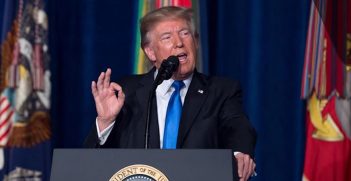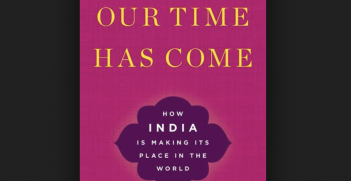The India-Australia Civil Nuclear Cooperation Agreement: Future Challenges and Current Scenarios

The India-Australia Civil Nuclear Cooperation has had a history of reservations and assurances. However, fears of a possible stagnation in the deal may make future cooperation uncertain.
In 2014, India and Australia signed a Civil Nuclear Deal and in 2017, Australia started to make plans to supply its first uranium shipment to India. The very same year India received its first shipment of Australian uranium. Negotiations on uranium sale to India began in 2012 after Canberra lifted a long time ban on exporting the valuable ore to Delhi to meet its ambitious nuclear energy programme. Today, one of the key debates in the international community is about the deal and its future prospects for both India and Australia.
During the Cold War, Australia saw very little prospect in engaging with India strategically. Even for India, when it came to a convergence of an India-Australia strategic perspective, they were largely unattainable. As party to the 1986 Treaty of Rarotonga, which ensured a “nuclear weapons free zone” in the South Pacific, Australia became obligated to ensure that nuclear technology and material were not exported to assist any nation in developing nuclear explosive devices. It would also apply strict non-proliferation measures to all exports of nuclear materials to ensure exclusively peaceful, non-explosive use. After the 1998 tests, Australia responded swiftly by placing a ban on the sale of uranium to India unless it became an NPT signatory. In 2005, as President George W Bush announced that he wanted to conclude a nuclear cooperation agreement between United States and India, the two countries- US and India, initiated talks on the same matter. The subsequent exemption of India from following the NSG guidelines (where a group of nuclear supplier countries who seek to contribute to the non-proliferation of nuclear weapons agree to guidelines on nuclear-related exports) as well as the signing of the Civil Nuclear Cooperation Agreement between India and United States in 2008 effectively opened the doors for other nation-states to engage in a Nuclear Cooperation Agreement with India. India’s deal with the US also effectively weakened Australia’s “supply ban” policy because it was not a part of NSG and a non-signatory to NPT.
In anticipation of the NSG waiver, the Howard government worked towards amending Australia’s policy on exporting nuclear material to India in 2007. However, any of its success could only be seen under the leadership and persistent effort of then-Prime Minister Julia Gillard, during which the ban on uranium sales to India was lifted in 2012. A Civil Nuclear Cooperation between the two nations was signed in September 2014 during the visit of then-Prime Minister Tony Abbott to India. The agreement became effective in 2015 and later the Australian Parliament passed the Civil Nuclear Transfer to India bill in December 2016. This ensured that uranium mining companies may fulfil contracts to supply Australian uranium to India for civil use with the confidence that exports won’t challenge the IAEA safeguards. However, over the years, scepticism over the countries’ capabilities to be able to strengthen their relations with the help of cooperation on the nuclear front emerged.
The first shipment of a very minute quantity of uranium arrived from India in 2017. However, since then, no developments have been seen as the deal was taking shape, there were concerns on the part of Australia that some of the uranium exported to India may be used by India to produce nuclear weapons. According to Crispin Rovere in 2014, “The Civil Nuclear Cooperation Agreement signed by Australia and India seriously undermines Australia’s credibility as a responsible nuclear supplier.” Apart from this, organisations such as the International Campaign to Abolish Nuclear Weapons (ICAN-Australia) expressed disappointment regarding the weak safeguards in the agreement, poor safety record at the Indian nuclear facilities, and the implications of agreeing to sell nuclear fissile material to a non-signatory to the NPT.
India’s accession to the global nuclear order to date has been incomplete. While India became a member of the Australia Group in June 2016; of the Wassenaar Agreement in July 2018; and the Missile Control Regime (MTCR) in July 2018, its hopes of membership of the NSG remains a farfetched dream. While Australia along with its godfather, the United States, continues to push for India’s membership in the NSG, it is only a matter of time before Australia tones down its support of India in order to balance relations with China, which opposes the country’s membership in the NSG and demands a “similar deal” with others (Pakistan); equalising India’s nuclear competence with that of Pakistan. This is the paradox of being a “middle state.”
Lastly, one of the most rising concerns and a matter of great debate in India-Australia relations is the speed at which cooperation is taking place. While two Australian companies- BHP Billiton and Heath Gate Resources has been in discussion with DAE (Department of Atomic Energy, India) for the exportation of uranium, India’s overall trade with Australia has been fairly slow.
The future of India-Australia Civil Nuclear Cooperation has many problems and prospects. There is the chance of the two nations cooperating in the energy sector and enabling greater economic relations. But problems still arise: lacklustre development of trade of uranium to India, non-disclosure of “limited” quantities supplied to India in 2017, other issues regarding safeguards, and the domestic politics of Australia also continue to plague this agreement.
Kanchi Mathur is a postgraduate student at the Department of Geopolitics and International Relations at the Manipal Academy of Higher Education in Manipal, Karnataka, India.
This article is published under a Creative Commons Licence and may be republished with attribution.





